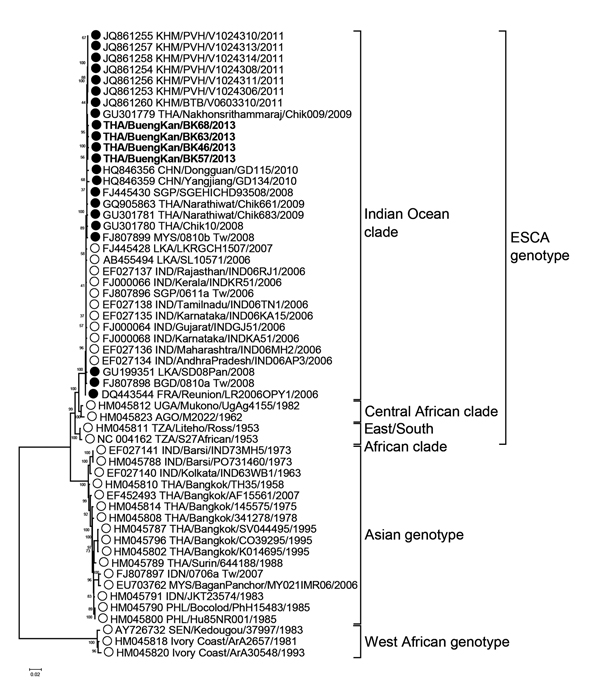Volume 20, Number 8—August 2014
Letter
Chikungunya Outbreak in Bueng Kan Province, Thailand, 2013
Figure

Figure. Phylogenetic analysis of whole genome nucleotide sequences of chikungunya virus (CHIKV) isolated during the 2013 outbreak in Bueng Kan Province, ThailandThe trees were generated by maximum-likelihood method, and the numbers along the branches indicate bootstrap valuesScale bar denotes nucleotide substitutions per siteBranch support and nodal confidence was assessed by using a general time reversible +I−4 nt substitution model with 1,000 bootstrap resamplingAll sequences are labeled with GenBank accession number, country (3 letter code) and city of origin, strain name, and year of samplingBold text indicates CHIKV isolates identified in this studyBlack and white circles on the tree indicate E1-A226V mutant and nonmutant strains, respectively. ESCA, East/Central/South African.